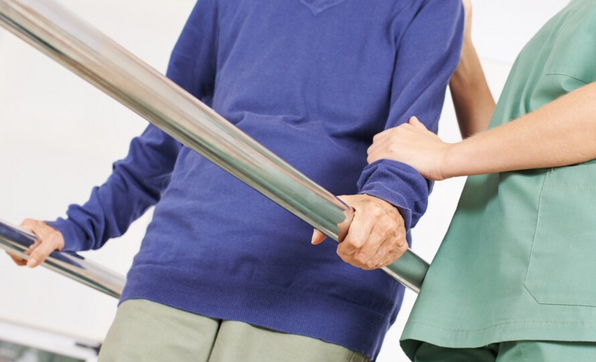Knee Replacement

What is a Total Knee Replacement?
We may consider a total knee replacement under certain circumstances, but there is also an option for a partial knee replacement. This will depend on the level of pain you are experiencing and how damaged the joint is. There are also non-surgical procedures that we can undertake to manage your pain, but this depends on the level of damage and pain in the knee. Recovery from a total knee replacement can take anywhere between 6 and 12 months.
The knee combines the lower end of the femur (thighbone), the patella (kneecap) and the upper end of the tibia (shin bone). A total knee replacement is when surgery is required to replace the whole knee joint with artificial materials, such as plastic and metal. Curved polished metal is used for the femoral surface, whilst the tibia is a metal plate which is covered with high-density plastic. Similar to a hip replacement, the materials are coated with a special coating or bone cement that encourages bone ingrowth. You can find out more about knee replacements with patient resource videos.

Common Reasons for a Total Knee Replacement and What to Expect
Whilst osteoarthritis is the most common reason for this surgery, your GP or doctor may recommend a total knee replacement if you are experiencing stiffness, severe pain, inflammation, or damage to your knee joint, which may be caused by the following conditions:
- Septic arthritis – joint infection
- Rheumatoid arthritis – an autoimmune disease
- Bone dysplasia – abnormal bone development
- Osteonecrosis – disrupted blood flow
- Aseptic necrosis (knee bone death).
Some people may experience pain day and night – common methods of maintaining the symptoms, such as medication and walking aids, don’t help relieve the pain. Others may be showing signs of advanced arthritis through X-rays and under these circumstances, we will need to consider a total knee replacement.
A knee replacement is recommended to help relieve pain and keep you mobile, however, the replacement is not a normal knee and won’t work as well as the original. The surgery offers 90-95% of patients a complete, or almost complete, pain-free life for up to 10 years. It is recommended that after you’ve recovered from your surgery (which could take up to 12 months), you do not partake in active sports or heavy labour. After 10 years, knee revision surgery may be required to replace the joint in order to ensure you maintain a pain-free and mobile life. Over time, the replacement can become loose in the socket – 5-10% of patients may need to consider revision surgery after this length of time. A second replacement surgery brings higher risks and the replacement isn’t usually as good as the first.

Knee Replacement Procedure
Before
- Try to keep a healthy weight and exercise regularly
- Ensure your doctor is aware of any medication you are taking
- If you smoke, try to quit or cut down 8 weeks before the surgery
- Book an appointment at the dentist to check for infections that may affect recovery.
Before your surgery, you will need to ensure your home is safe for your recovery:
- Ensure you have someone available to drive you home from the hospital
- If you are a carer for someone else, you will need to make arrangements for another carer to take your place whilst you recover
- Ensure you have some assistance at home for household chores, such as cooking and cleaning
- You may need help with footwear, as your knee will have limited bend after surgery
- Cook meals in advance to freeze them, so that you don’t need to worry yourself or anyone else with cooking
- Ensure trip hazards such as rugs, mats and cables have been removed
- Organise your home so that you don’t have to lift and bend so much
- For 12 weeks after your surgery, avoid flights and long journeys.
During
- Once the anaesthetic takes effect, an incision will be made on the front of your knee and the damaged part of the knee will be removed
- An artificial knee joint is put in place – cement or a coating will be added to help the joint bond directly to the bone
- Stitches or clips will be used to close the skin and add a bandage to keep the wound clean.
After
Once the surgery is completed, you’ll be able to come around in the recovery room. You will be connected to a small tube which drains any excess fluid. A nurse will be available to help you. You may also be connected to an IV (drip), which provides fluids and pain relief. Once the nurse has checked your vitals, you will be transferred to your room.










